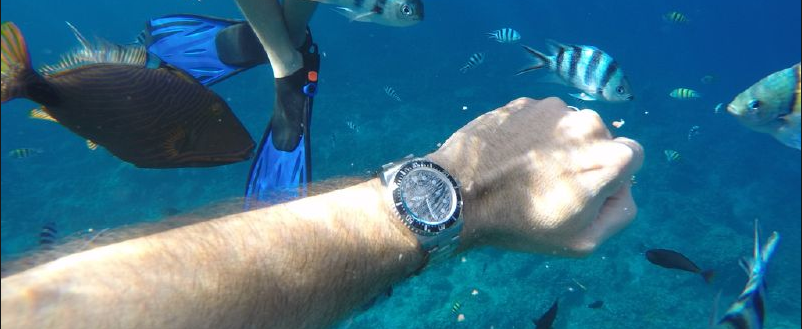The term “water resistance" is often confused with “waterproof”. The International Organization for Standardization issued a standard for water resistant watches which also prohibits the term "waterproof" to be used with watches.
The term “water resistance" is often confused with “waterproof”. The International Organization for Standardization issued a standard for water-resistant watches which also prohibits the term "waterproof" to be used with watches.

Water resistance is achieved by the gaskets which forms a watertight seal, used in conjunction with a sealant applied on the case to help keep water out. The material of the case must also be tested to pass as water resistant. In most cases, replacing the battery requires a trip to a watch-repair shop or watch dealer; this is especially true for watches that are designed to be water-resistant, as special tools and procedures are required to ensure that the watch remains water-resistant after battery replacement.
Watches are classified by their degree of water resistance which is normally expressed in meters. This rating is only theoretical and refers to the depth that a watch will keep water out if the watch and water are both motionless. These conditions never really exist in real life because the user's arm movement dramatically increases the pressure on the watch, along with the water moving itself.
People are often confused by what the stated water resistance of watches means. Does a watch marked with water resistance of “30 metres” mean that you can dive with it as deep as 30 metres – the answer is No. The 30 metres refers to the static pressure, not the actual depth of water. This is a common misconception.
The information below is a simplified rough guide that should help you understand how deep you can really go with your watch. Always check the instruction book or check with the watch distributor.
If a watch is labelled:
- Only "water-resistant” – it can withstand slight splashes, but should not be submerged in any water.
- 50 meters - suitable for brief water exposure
- 100 meters - suitable for standard swimming pools and shallow diving
- 200 meters - suitable for recreational scuba diving – not deep sea.
Watches should not be put in a sauna or a hot tub since the exposure to heat can easily make the gaskets lose their shape and ability to keep water and dust out.
Watches should not be worn in the bath or shower. The soap suds reduce the surface tension of the rubber gasket in the watch, which allows water to get in. The soap can also damage the seal itself. So, we highly recommend you do not bathe with your watch.
It is important to note that continued exposure to water may affect the life span of a leather strap - proper care should be taken to follow the manufacturer's guidelines.
If you are not sure about your watch, then you should always read the instruction book, contact the watch distributor or check the manufacturer’s website for more detail.
Click here to view the range of luxury watches scheduled to be auctioned at First State Auctions.
